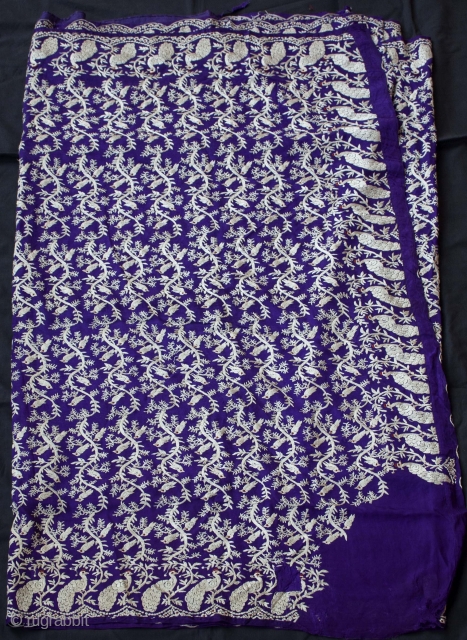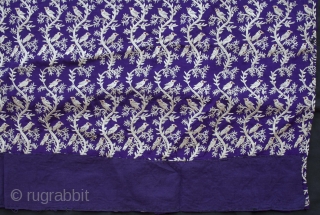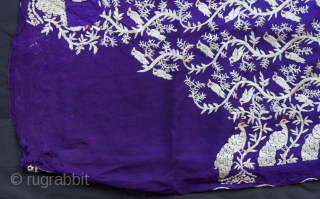Back
Set on a Navy blue fabric, white vines run through the breadth of the sari in a close repeat like an enchanting snake. Perched on the creepers are small birds on either side of the vine. This bird motif is called the chakla- chakli. The entire composition creates a lyrical beauty as one integral piece. On the borders are the most exotic white peacocks in the most graceful stance that create awe and wonder.
The parsi gara emerged due to the Indo- Chinese trade. Introduced in the 19th century by the Parsi traders, the gara sari soon became a symbol of the Zoroastrian culture and traditions. At one point the Parsi gara was a part of the bridal trousseau. The traders were fascinated with the delicate Chinese embroidery and asked them to create the same on a six -yard length of cloth. Thus, the confluence of the two cultures led to ethereal charm that exists today. The sari is an heirloom for any Zoroastrian family.
Gara is the gujrati word for sari, but now it has come to mean a particular Indian Zoroastrian style sari. The finest quality of gara, just like this one, is known for its flawless embroidery that looks exactly the same on either side of the fabric. The fabric used for this sari is called gajji, a type of hand- woven natural silk.
There are very few pieces left that are embroidered all over the length of the fabric, as most of the pieces have work limited only to the borders. This style of painstaking embroidery with silk threads is a dying art with the number of craftsmen dwindling.
Dated; 19th or 20th century.
size: 440 x 110 cms
price:
Price on request
- Home
- Antique Rugs by Region
- Category
- Profiles
- Post Items Free
- Albums
- Benaki Museum of Islamic Art
- Budapest: Ottoman Carpets
- Gulbenkian Museum
- Islamic Carpets. Brooklyn
- Islamic Textiles. Brooklyn
- Konya Museum: Rugs
- MKG, Hamburg
- MMA: Caucasian Carpets
- MMA: Mamluk Carpets
- MMA: Mughal Indian Carpets
- MMA: Ottoman Carpets
- MMA: Safavid Persian Carpets
- MMA: Turkmen Rugs
- McCoy Jones Kilims
- Ottoman textiles. Met
- Philadelphia Museum
- Rugs and Carpets: Berlin
- Seljuqs at the Met
- TIEM, Istanbul: Carpets
- V&A: Classical Carpets
- Vakiflar Carpets: Istanbul
- Baluch Rugs: Indianapolis
- Gallery Exhibitions
- Jaf an Exhibition
- Alberto Levi Gallery
- Andean Textile
- Christie's London: 2016
- Francesca Galloway
- HALI at 40
- ICOC Washington, DC 2018
- Jajims of the Shahsavan
- London Islamic Week April, 2018
- Mongolian Felts
- Navajo Rugs: JB Moore
- Persian Piled Weavings
- SF Tribal & Textile Art Show 2020
- SF Tribal 2019
- Sotheby's: C. Alexander
- Turkish Prayer Rugs
- Turkmen Main Carpets ICOC 2007











